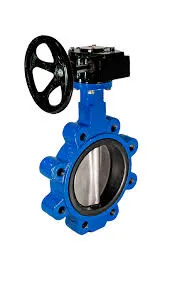Dec . 03, 2024 18:06 Back to list
high performance butterfly valve
High Performance Butterfly Valves The Key to Efficient Flow Control
In the realm of fluid control systems, the butterfly valve stands out as a popular choice due to its compact design, lightweight nature, and ease of operation. Among the various types of butterfly valves, high-performance butterfly valves (HPBVs) are engineered to offer enhanced efficiency, reliability, and durability, making them ideal for demanding applications in industries such as oil and gas, water treatment, and chemical processing.
Understanding High-Performance Butterfly Valves
High-performance butterfly valves are designed to meet rigorous operational demands and are typically made from robust materials that can withstand high pressures and temperatures. Unlike standard butterfly valves, HPBVs feature a specialized disc design and sealing mechanism that allows for superior flow regulation and less turbulence. This design minimizes pressure drop and energy loss, translating to enhanced system efficiency.
One key feature of high-performance butterfly valves is their ability to provide a tight seal. This is achieved through the use of advanced elastomeric materials and precision manufacturing techniques, which ensure that the valve closes securely and reduces the potential for leakage. This is especially crucial in applications that involve hazardous materials or require strict adherence to environmental regulations.
Advantages of High-Performance Butterfly Valves
The benefits of using high-performance butterfly valves are numerous
1. Flow Control HPBVs are excellent for throttling and regulating flow. Their design allows for precise adjustments, providing operators with the ability to fine-tune processes according to operational needs.
2. Space and Weight Efficiency Due to their compact design, HPBVs take up less space in piping layouts compared to other valve types. This is particularly advantageous in applications where space is limited or where weight considerations are paramount, such as in offshore drilling platforms.
high performance butterfly valve

3. Corrosion Resistance Many high-performance butterfly valves are constructed from materials that resist corrosion, such as stainless steel or specialized alloys. This feature is essential in industries that deal with corrosive fluids, ensuring the longevity and reliability of the valve.
4. Cost-Effectiveness Although the initial investment in a high-performance butterfly valve may be higher than that of a standard valve, the long-term savings through reduced maintenance costs and improved efficiency often offset the upfront expense. The durability and reliability of HPBVs can lead to a lower total cost of ownership.
Applications of High-Performance Butterfly Valves
High-performance butterfly valves are versatile and can be found in myriad applications
- Oil and Gas Industry HPBVs are widely utilized in extraction, processing, and transportation of oil and gas due to their ability to handle high pressures and corrosive environments. - Water Treatment These valves play a critical role in municipal and industrial water treatment plants, managing flow rates and ensuring the integrity of the system.
- Chemical Processing HPBVs are often found in chemical plants where precise control over fluid flow is necessary, especially when handling aggressive chemicals.
- Power Generation In power plants, HPBVs are used in cooling water systems and steam lines, where efficient flow control is essential to the overall operation.
Conclusion
High-performance butterfly valves represent a blend of innovation and reliability in fluid control technology. Their advanced design, superior sealing capabilities, and versatility make them an indispensable component in various industrial processes. As industries continue to seek efficient solutions to meet increasing operational demands, the role of HPBVs will only grow in importance. By investing in quality high-performance butterfly valves, operations can achieve improved efficiency, reduced downtime, and enhanced safety, all contributing to a more sustainable and effective future in fluid management.
Share
-
Reliable Wafer Type Butterfly Valves for Every IndustryNewsJul.25,2025
-
Reliable Flow Control Begins with the Right Ball Check ValveNewsJul.25,2025
-
Precision Flow Control Starts with Quality ValvesNewsJul.25,2025
-
Industrial Flow Control ReliabilityNewsJul.25,2025
-
Engineered for Efficiency Gate Valves That Power Industrial PerformanceNewsJul.25,2025
-
Empowering Infrastructure Through Quality ManufacturingNewsJul.25,2025